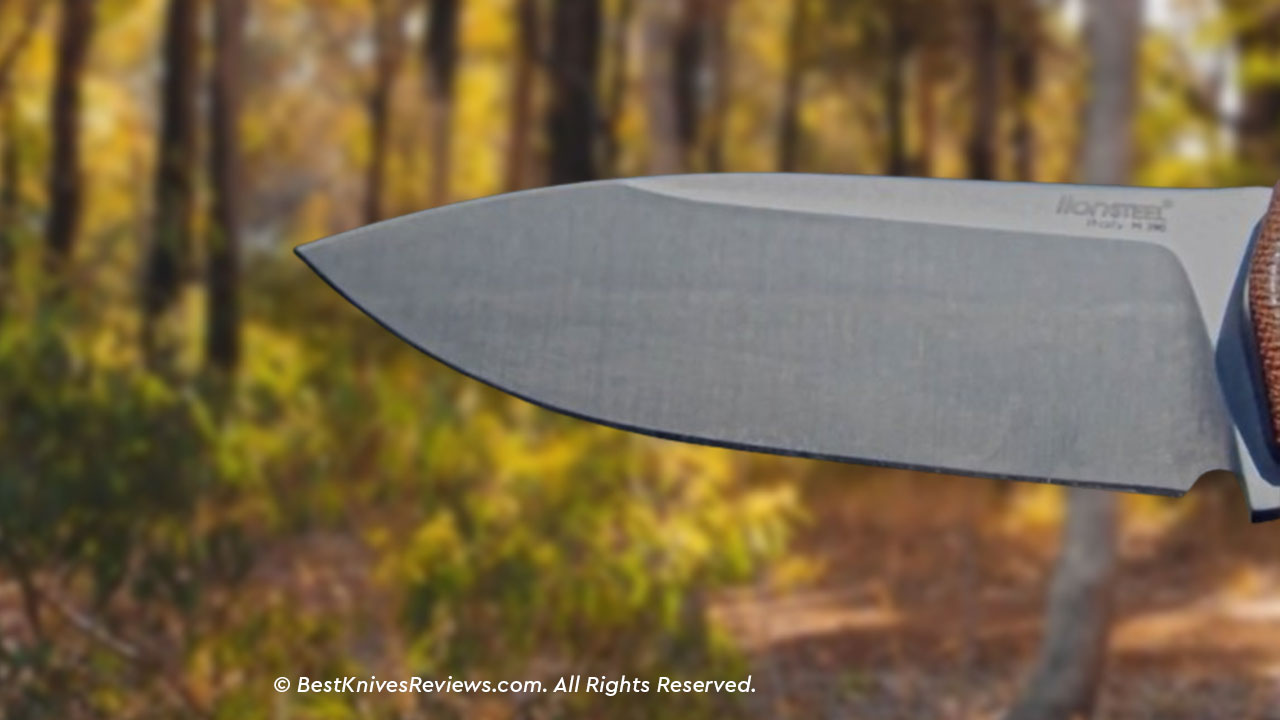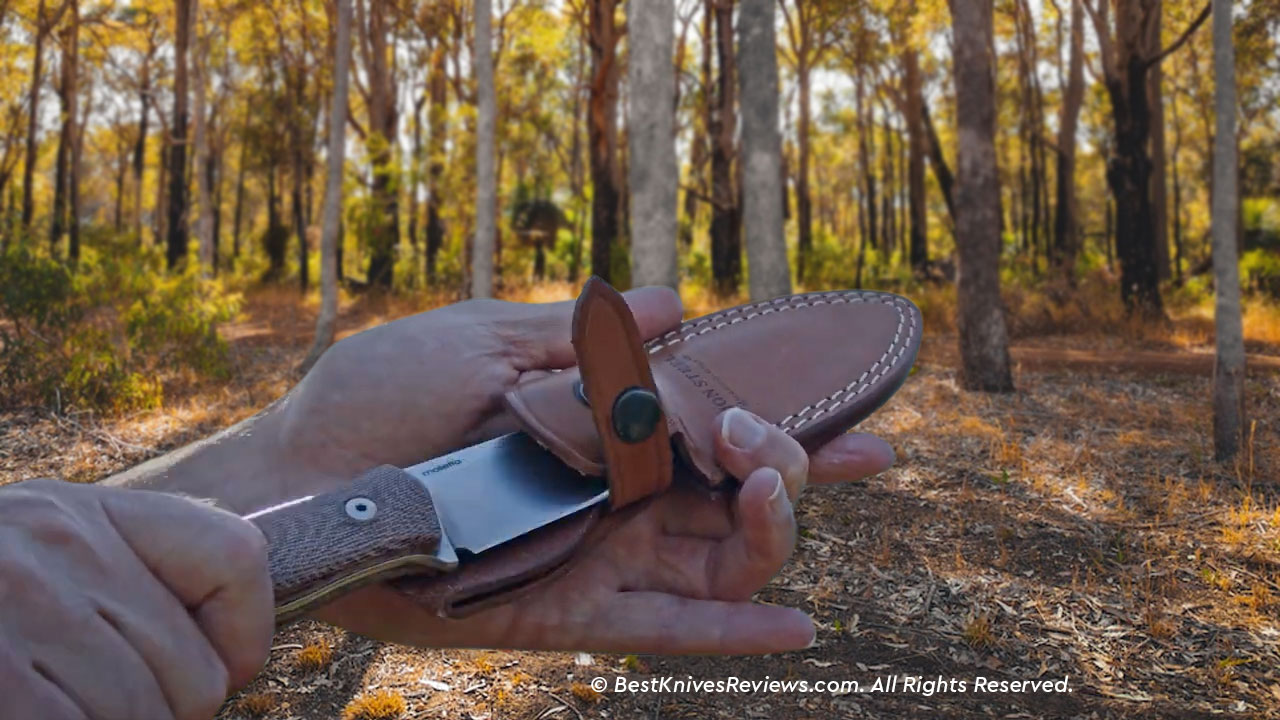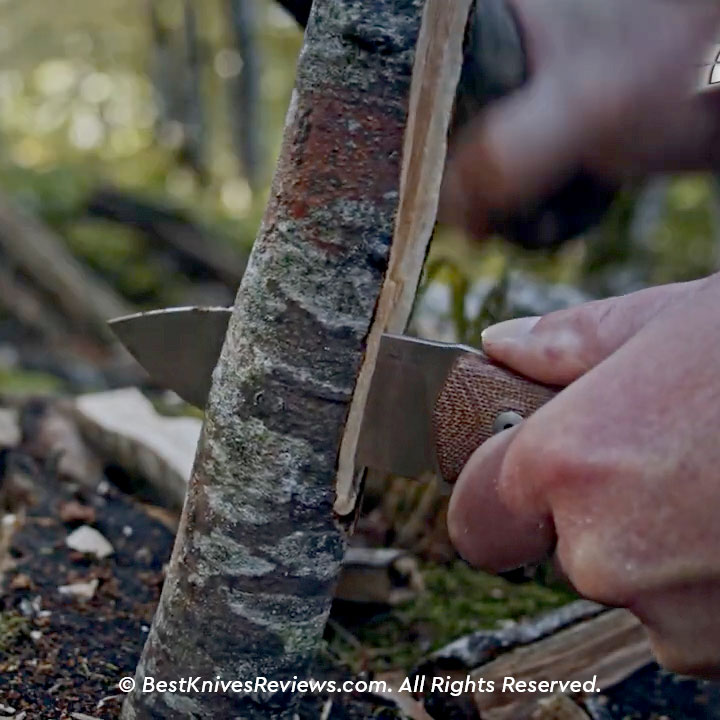Lionsteel M4 is a fixed blade (Bohler M390) knife designed for hiking and bush craft activities designed by Michele Pensato (Molletta) and is made in Maniago, Italy.
LionSteel is an Italian cutlery company that sells custom and tactical knives as well as other knife related products. It is based in Maniago, Italy and has partnered with companies like Spyderco, CRKT, Pohl Force and DPx Gear to produce unique designs and features of knives.
Lionsteel Knives has also collaborated with several custom knife makers and designers such as Ernest Emerson, Tommaso Rumici, Gudy Van Poppel, Michele Pensato and Robert Young Pelton to create custom knives.
LionSteel offers warranty on all its products and offers repair services for defect in materials and manufacturing, which is one of the incentives to opt for their knives. And so today we will be reviewing the LionSteel M4 fixed blade knife that can last a lifetime.
LionSteel M4 Fixed Blade Review
The LionSteel M4 is a fixed-blade knife as long as 8” with a 3.75” blade, featuring M390 blade and Micarta scales. It is a full tang blade that comes with a brown leather sheath with a belt loop. The scales look a lot like wood, and it is also available in walnut wood, santos wood and olive wood.
If you look closely, it is finely laminated with natural textured and milled Micarta extending up to 4.25”, is 1” wide and 0.83” thick. It also has a lanyard hole and is great for outdoor activities like camping, hiking, fishing, as well as for everyday use. The blade is a drop point plain edge with satin finish and flat grind, 1.25” wide and 0.15” thick. It weighs 4.83 oz. and is configured for right and left hand usage.
Key Specifications of LionSteel M4
First Impression of LionSteel M4
The LionSteel M4 arrived in the mail packed in a cardboard box with the label mentioning the product inside. The sheath looked like brand new leather and even smelled like it. The brand’s logo LionSteel was etched on it, along with the model name M4. It also had a manual and a sticker.

The knife’s blade was carefully wrapped in thermophore, while the entire knife was wrapped in plastic. Once out, the knife shone with incredible shine and a brand new look. The blade and the handle had no scratches or any marks on it. It looked very impressive.

The front side of the blade near the spine featured the brand’s name, country of origin and blade material – LionSteel Italy M390. The back side said Molletta, the designer of this knife. The branding was minimalistic and elegant, clearly etched right there on to the knife.

You can also clearly see the vertical grind lines running through the length of the blade side. The sharpening choil and the finger guard were very well-placed and very comfortable to hold. You can also see the raised spots around the screws on the Micarta, signifying the tightly fixed blade. The blade is also centrally fixed with a full tang.
You can also really feel the thickness of the blade, as well as how hard it is. The spine is also well crowned, making it easy to choke it up. The swell also feels really great. It really allows you to grip the knife carving in to your knuckles, making you feel like the knife was made for your hand.

However, the knife does not have any jimping. But that is fine because of the fine thumb ramp. It is finely done and allows you to slide your finger up comfortably.
The Blade of LionSteel M4
The blade profile of M4 is really impressive. It has enough cutting edge, piercing ability and strength. It is quite thick for an EDC knife with a blade stock thickness of 0.15”. Most standard EDC knives have a stock thickness of 0.12” or 0.10” to be too thin. However, that makes the M4 eligible for tougher EDC tasks. The M4 has a full blade tang throughout the handle and in the extended area. The drop point high flat ground configuration provides it great edge strength.

The full tang blade features a crowned spine with some rough portion on the pommel. It allows the user to strike a fire-steel without even uncovering the sheath. But it is not such a good idea and not very safe.
The blade also has a finger guard that keeps your finger from sliding on to the cutting edge, preceded by a sharpening choil. The lower guard is mirrored on the spine with a minimalist thumb bump. The latter guard acts as an orienting point for your thumb when holding the knife in a choke up position and doing precise cutting. The upper and lower guards give the knife a clean and aesthetic look while making it look aggressive.
The size of the blade being above 3” makes it long enough to do all kinds of jobs but not enough to become unwieldy when performing detailed cutting tasks.

The M390 powder metallurgy steel is an ultra-premium super quality steel with excellent corrosion resistance and hardness for excellent wear resistance. The chromium, molybdenum, vanadium and tungsten promote sharpness and edge retention.
Most of the carbides in M390 are formed by vanadium and molybdenum, leaving more chromium levels to fight corrosion. The steel’s hardness level is 60-62 HRC, which is quite good for an EDC. It can even be polished to achieve a true mirror ‘microclean’ level. The satin finish also adds to the super shiny and glossy look. Although it is difficult to sharp, it will be less time consuming with its flat grind and plain edge.
The Handle of LionSteel M4
The M4 is available in G10, Santos Wood, Olive Wood and Walnut, but we received it in the Micarta scales. It is smooth yet offers enough traction for a comfortable grip, thanks to the subtle texturing. It does not accumulate dirt, sweat or hand oils, so suffice to say that it ergonomically friendly.

That also makes the knife easy to maintain, considering it does not require frequent cleaning. But it would be better to do so for the long life of the knife. If you take care of it well it may as well last you a lifetime. It is that durable. You can apply some gun-stock oil on the handle to keep it in a decent shape.

The scales are bolted on to the tang instead of fastened by rivets. Molletta – or Michele Pensato, says that using bolts is a superior fastening method as opposed to rivets, as they make the tool more durable. Rivets may loosen over time and cannot be tightened.

There is also a palm swell on the handle that mitigates the tendency of the hand to move along the handle to find the most comfortable grip. The M4 sports a sufficiently featured palm swell to help you hold on firmly to the knife.

The full tang blade that extends to the very end of the scale protrudes out. It is contoured with fine edge and will not pinch, but it seems too pronounced. And it does not get in the way of the small lanyard hole, placed just below the rear towards the bottom end of the handle. You can use it to secure any kind of lanyard without creating any hot spots.
The handle is simply manufactured, but delivers great specs.
The Sheath of LionSteel M4
The M4 comes with a handmade double-stitched leather sheath that allows for right-side vertical carry only. The belt loop fastens by a single rivet to secure it in place. Once closed, it stays close. It has no loose rivets unlike the M2M, its prior version.

It carries really well on to the belt and even looks smart when carrying it. Although it weighs more than a regular folding knife, aka 4.83 oz. the sheath’s good grip makes it easy to carry.

Once you close the knife in the sheath, the blade will not cut through or rip off the inside stitching of the sheath. This is an issue that can happen with fixed blade knives. It is imperative that you maintain the sheath well. It is also important not to shove the blade in. Instead, place it carefully so that it does not damage the sheath.
Field Test of LionSteel M4
If you are used to carrying folding knives as EDC, it may take you some time to get used to the fixed blade. But once you do, you will find out that the M4 is not really that hard to carry. Apart from its unfolding capability, it is actually really smart to carry around with the sheath hanging around your belt. You can leave the sheath hanging on to the belt while fetching the knife, and placing it back on without any hassle.
You can literally carry it for any EDC cutting task. It works great with cutting papers, opening packaging, ripping off plastic, packaging, cardboard boxes, bubble wrap, and pinching through stuff. It also works with a single slicing action. Similarly, it is easy to cut wood chips and pipes with it.
We also got rid of the secondary bevel, or the secondary V edge and make it compact so it will slice more easily. The secondary convex works really well. Sharpening made the edge extremely sharp and shiny. So sharp that it can easily remove the hair on your skin. However, it does not need sharpening right out of the box. It can perform bushcraft survival tasks without frequent sharpening.
As for outdoor use, we used the M4 in gardening and harvesting plants. It was a breeze to work with the knife. We also carved wood with it and sliced wood chips with exceptional ease. So suffice to say that the LionSteel M4 is indeed a useful outdoor tool. You can also use it to baton wood trunks like we did. The blade sharpness and the knife’s fixed-blade hardness worked really well in batoning. We continued cutting firewood until we had enough to start a fire, and it did not give way. It had more edge retention than Elmax.
Also, it was easy hold it in the choke up and choke back position when carving wood chips. It did not put too much pressure inside the palm of the hand.
It also sparks fire with the ferro rod quite easily. It created sparks with a single swoop. And even though it has a rounded spine, it makes great sparks.
We used a piece of coal, the ferro rod and wood chips to start a fire, and it was really easy to do so.
You can also use dried fern to start the fire, and blow on it to expand the fire.
Then add the chopped wood that we cut to increase the fire intensity.
We then batoned the wood planks again to see if the knife’s edge holds. The results were amazing. The edge sliced through the wood effortlessly.
We did the experiment on dried hard oak wood, which is hard to baton. But the LionSteel M4 did an amazing job.






Comparing LionSteel M4 to LionSteel M2 & M2M
When it comes to high-quality usable fixed-blade knives, LionSteel does a pretty good job. Although there are other knife brands that manufacture fixed-blade knives, they do not compare to everything that M4 does.
The M2M has the same features and dimensions as the M4, but has a bead-blasted finish. It is not as good as the satin or stonewash, as it gives it a rough look. It has a minimalist design and an all-rounder outdoor cutter. The knife’s sheath covers the knife fully as opposed to what the M4’s sheath does. Nevertheless, both are good outdoor EDC knives and are multipurpose.

The M2, on the other hand, sports an olive wood handle with a D2 blade. It also costs less than the M4 and is slightly smaller in size. The overall knife profile is also somewhat different. It has finer swedges than those on the M4 – more pronounced but good regardless. The sheath covers the entire length of the knife, leaving just enough room to hold the handle. Its blade thickness is 0.01” more than the M4’s, but performs really well.
All in all, when it comes to fixed-blade knives, LionSteel has a pretty good reputation in the market.
LionSteel M4 vs Fallkniven F1X
Both the LionSteel M4 and Fallkniven F1X are pretty similar knives in size and weight, although not exactly. Their knife profiles match, and the fact that both are fixed-blade and come with a leather sheath. The F1X is purely a survival knife, used for outdoor and camping activities. The M4 is not as hefty in comparison. The blade of F1X is slightly larger and beefier than M4’s, and its blade stock thickness is also more.
The handle size of F1X is also slightly larger than M4, and provides more grip area for the hand. It weighs a little over 8 ounces with the sheath.
The F1X has a laminate softer steel blade, and its edge is in cobalt steel, which is quite hard. The M4 features M390, and holds the edge extremely well. It also cuts really well for a really long time before getting dull. And is it does, a bit of touch on the strop or a bit of honing rod fixes it right up. So when it comes to edge holding, the LionSteel M4 holds it a bit better in our experience. It is their edge geometry that comes into play to how well they each hold their edge. But both the knive work really well, and the edge retention on F1X is not to complain about.
Pros & Cons of LionSteel M4
PRO’s
Con’s
Conclusion: LionSteel M4 Review
LionSteel M4 is an exceptional fixed-blade knife with its attractive look, attention to detail features, and exceptional performance. The thickness of the blade does not get in the way of the blade’s sharpness. In fact, it makes it feasible to carry out tougher and heavier EDC tasks including gardening, fishing, hunting, camping, and food preparation.

The Micarta scales are well done with all the features except jimping, but even that is not a problem on the M4. The M390 blade has excellent edge geometry and blade strength.
The high-quality of the M4 could only be compared with LionSteel’s own knives, manufactured by the same designer. All the knives perform really well.
